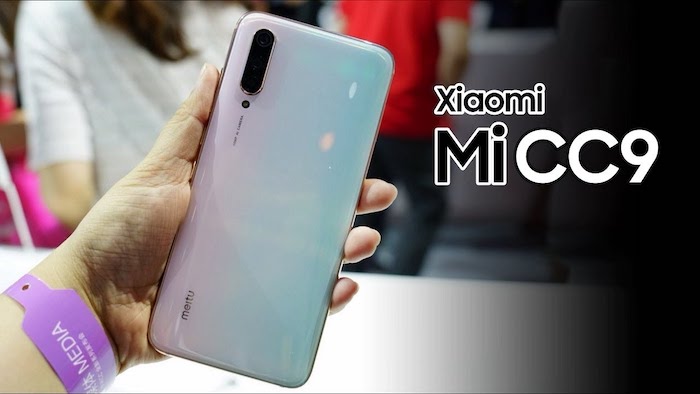The number of connected IoT devices on Xiaomi’s IoT platform reached approximately 213.2 million in Q3 2019, up 62.0% YoY. The number of users who have five or more devices connected to Xiaomi’s IoT platform increased to 3.5 million, an increase of 78.7%. MAUof MIUI, Xiaomi’s Android-based operating system, reached 291.6 million. In September 2019, Xiaomi’s AI assistant had 57.9 million MAU.
Xiaomi Financial Results
In Q3 2019, Xiaomi achieved RMB53.7 billion in total revenue, representing an increase of 5.5% YoY. Gross profit increased to RMB8.2 billion, representing a year-over-year increase of 25.2%. Adjusted net profit increased by 20.3% year-over-year to RMB3.5 billion. As of September 30, 2019, Xiaomi’s total cash resources amounted to RMB56.6 billion.
In Q3 2019, Xiaomi continued to execute Xiaomi’s “Smartphone + AIoT” dual-engine strategy and it yielded positive results. Xiaomi’s user base and the number of devices connected to Xiaomi’s platform have continued to grow robustly.
In September 2019, monthly active users (“MAU”) of MIUI reached 291.6 million, representing an increase of 29.9% over the corresponding period in the previous year.
The number of connected IoT devices (excluding smartphones and laptops) on Xiaomi’s IoT platform reached 213.2 million as of September 30, 2019, representing year-over-year growth of 62.0%. Meanwhile, Xiaomi’s AI assistant had 57.9 million MAU in September 2019, representing a year-over-year increase of 68.6%.
Xiaomi’s products were well received by consumers during the Double 11 Singles’ Day shopping festival in China. Xiaomi’s total payment for sales across all platforms and channels surpassed RMB6.1 billion in China.
Xiaomi’s flagship store on the Tmall platform achieved a total payment for sales of more than RMB2.1 billion, ranking 1st among all brand flagship stores on Tmall for the 7th consecutive year since Xiaomi first participated in the Singles’ Day shopping festival in 2013.
In October 2019, Xiaomi made its debut on the Fortune Future 50 list, ranking 7th, and was the second-highest ranked among all Chinese companies on the list. Furthermore, Xiaomi ranked 57th on Forbes’ Top 100 Digital Companies List.
Xiaomi Smartphones
Xiaomi’s smartphone segment recorded RMB32.3 billion in revenue in Q3 2019. Xiaomi’s smartphone sales volume in Q3 2019 reached 32.1 million units. According to Canalys, Xiaomi ranked 4th globally in terms of smartphone shipments in the third quarter of 2019, with a market share of 9.2%.
Following the introduction of Mi MIX 3 5G in Europe in February 2019, Xiaomi launched Xiaomi’s first 5G smartphone in China, Mi 9 Pro 5G, in September 2019, marking another milestone in its 5G technology development. Mi 9 Pro 5G was well received by the market.
In 2020, Xiaomi expects to launch ten or more 5G smartphone models to capture the 5G smartphone replacement cycle, starting from China.

In Q3 2019 , Xiaomi continued to advance technologically and create breakthroughs. In September 2019, Xiaomi released Xiaomi’s concept smartphone, Mi MIX Alpha, a futuristic 5G smartphone featuring the world’s first surround display and a screen-to-body ratio of 180.6%, demonstrating Xiaomi’s continuous efforts in exploring cutting-edge technology. Xiaomi introduced Mi CC9 Pro in November 2019, which is the first mass-produced smartphone to carry a 108MP penta-camera.
It is also capable of up to 10x hybrid zoom and up to 50x digital zoom. Mi CC9 Pro Premium Edition achieved a DXOMARK score of 121 for overall camera performance, ranking 1st globally at the time of launch. It also achieved a DXOMARK score of 102 in the video category, the highest among all smartphones at the time of launch. Xiaomi also released an overseas version of this smartphone, Mi Note 10, in Spain in November 2019.
According to Canalys, Redmi Note 7 was the best-selling smartphone model among all models made by Chinese companies in terms of global shipments in Q3 2019. Xiaomi launched Redmi Note 8 and Redmi Note 8 Pro in August 2019, Redmi 8A and Redmi K20 Pro Premium Edition in September 2019, and Redmi 8 in October 2019.
The average selling price (“ASP”) of Xiaomi’s smartphones in mainland China continued to increase in Q3 2019, achieving year-over-year growth of 4.6%. The ASP of Xiaomi smartphones in overseas markets recorded a quarter-over-quarter increase of 7.8% and a year-over-year decrease of 4.1% in Q3 2019. The decrease was primarily due to a different product mix compared to the third quarter of 2018.
The gross profit margin of Xiaomi’s smartphone segment further increased from 8.1% in the second quarter of 2019 to 9.0% in Q3 2019.
Xiaomi IoT and lifestyle products
In Q3 2019, the revenue of Xiaomi’s IoT and lifestyle products segment rose by 44.4% year-over-year to RMB15.6 billion.
Xiaomi’s smart TV business maintained its leading edge in both mainland China and overseas markets. In Q3 2019, global shipments of Xiaomi smart TVs reached 3.1 million units, representing a year-over-year growth of 59.8%.
According to All View Cloud (“AVC”), Xiaomi ranked 1st in terms of TV shipments in mainland China in Q3 2019, with a market share of 16.9%. With Xiaomi’s consistent efforts to expand Xiaomi smart TV business globally, Xiaomi ranked top five in terms of global TV shipments in Q3 2019 according to AVC.
Xiaomi further expanded Xiaomi’s product offering in the high-end segment and launched Mi TV 5 and Mi TV 5 Pro in November 2019. Mi TV 5 Pro utilizes a 4K quantum dot display panel that covers a 108% NTSC wide color gamut and comes with HDR10+ support and built-in MEMC technology, enabling a premium picture quality.
Xiaomi has positioned large home appliances as strategic components of Xiaomi’s AIoT strategy. Focused on cutting-edge innovation, superior design and interactive experiences, Xiaomi is dedicated to enhancing the connectivity and compatibility of the whole suite of Xiaomi’s smart home appliances.
Following the successful launch of Xiaomi’s air conditioners and washing machines, Xiaomi launched Mi Refrigerator in October 2019, further expanding Xiaomi’s spectrum of products in the large home appliances category.
In October 2019, Redmi introduced the RedmiBook 14 Ryzen Edition and Xiaomi introduced Mi Laptop 15 Pro, both of which enjoyed widespread popularity.

Following the success of Xiaomi’s Mi Band, Xiaomi launched Xiaomi’s new wearable product, Mi Watch, in November 2019. Equipped with an independent eSIM and supported by MIUI For Watch, Mi Watch is dedicated to bringing Xiaomi’s customers the ultimate user experience in both hardware and software.
Many of Xiaomi’s IoT products have been well received by the market. For example, according to AVC, for the nine months ended September 30, 2019, Xiaomi’s fresh air ventilator was the top fresh air ventilator in mainland China in terms of several measurement aspects, including online brand sales, online single-product sales volume and value, while Xiaomi’s Mi Water Purifier ranked top two in terms of online sales value.
Xiaomi’s AIoT products won multiple domestic and international awards. Xiaomi’s Mi AI Touchscreen Speaker won multiple design awards, including the International Design Excellence Award (IDEA), the Red Dot Design Award, and the Good Design Award.
Meanwhile, Xiaomi’s Mi Router Mesh received a 5-star recommendation in the China Mobile 2019 Smart Hardware Quality Report, and Xiaomi’s Mi Electric Scooter Pro won the Expert Imaging and Sound Association’s Best Product (Electric Vehicle) Award.
Xiaomi Internet services
In Q3 2019, Xiaomi’s user base continued to expand. The MAU of MIUI increased by 29.9% year-over-year to 291.6 million in September 2019. Xiaomi’s mainland China MAU of MIUI remained flat year-over-year in September 2019 at 112.8 million.
The MAU of Xiaomi’s smart TVs and Mi Box achieved 50.1% year-over-year growth, reaching 23.9 million in September 2019.
Revenue from Xiaomi’s internet services segment grew by 12.3% year-over-year to RMB5.3 billion in Q3 2019. Advertising revenue decreased by 9.0% year-over-year to RMB2.9 billion, which was mainly due to pre-installation revenue decreasing to RMB376.6 million from RMB825.4 million YoY. This decrease partly reflected a shift in advertiser preference for non-pre-installation advertising. Excluding preinstallation revenue, advertising revenue grew 6.9% year-over-year in Q3 2019.
In Q3 2019, Xiaomi continued to diversify Xiaomi’s advertiser base by expanding into more vertical industries, including financial services and small- and medium-sized enterprises, to develop a more robust and healthier advertising business.
Revenue from gaming increased by 26.0% year-over-year to RMB822.3 million in Q3 2019. Xiaomi’s other internet value-added services grew by 78.2% year-over-year to RMB1.6 billion, primarily as a result of the strong growth in revenue of Xiaomi’s fintech business and Youpin e-commerce platform.
In Q3 2019, Xiaomi launched MIUI 11, featuring a minimalistic design with efficient office and smart travel application suites. Combining the improvements in efficiency with the new optimized modern user interface design, MIUI 11 provides an all-rounded upgrade to Xiaomi’s users.
With Xiaomi’s continuous efforts to diversify Xiaomi’s internet services business, Xiaomi’s internet services revenue outside of advertising and gaming from mainland China smartphones, including those generated from the Youpin e-commerce platform, fintech business, TV internet services and overseas internet services, increased by 87.8% year-over-year and accounted for 37.2% of Xiaomi total internet services revenue in Q3 2019 .
In Q3 2019, the gross merchandise volume of Xiaomi’s Youpin e-commerce platform maintained a strong year-over-year growth primarily due to the expansion of Xiaomi’s product categories on the platform and the continued growth and diversification of Xiaomi’s user base.
In Q3 2019, the revenue from Xiaomi’s fintech business increased by 91.2% year-over-year to RMB1.0 billion. The increase was mainly due to the strong growth achieved in Xiaomi consumer loan business.
In Q3 2019, Xiaomi’s revenue from TV internet services continued to grow, driven by the increase in both subscription revenue and advertising revenue. In September 2019, the MAU of Xiaomi’s smart TVs and Mi Box reached 23.9 million, representing a year-over-year increase of 50.1%.
As of September 30, 2019, Xiaomi had more than 3.2 million paid subscribers, representing year-over-year growth of 68.8%.
Xiaomi’s AIoT Strategy
In Q3 2019, Xiaomi continued to execute Xiaomi’s “Smartphone + AIoT” dual-engine strategy and maintained Xiaomi’s leading position.
As of September 30, 2019, the number of connected IoT devices (excluding smartphones and laptops) on Xiaomi’s IoT platform reached approximately 213.2 million, representing a year-over-year increase of 62.0%.
The number of users who have five or more devices connected to Xiaomi’s IoT platform (excluding smartphones and laptops) increased to 3.5 million, representing a year-over-year increase of 78.7%.
In September 2019, Xiaomi’s AI assistant had 57.9 million MAU with a year-over-year increase of 68.6% and continued to be one of the most used AI voice interactive platforms in mainland China. Meanwhile, Xiaomi’s Mi Home app had 32.1 million MAU in September 2019, with 63.0% of these active users being non-Xiaomi smartphone users.
Xiaomi continued to strengthen the connectivity across devices on Xiaomi’s AIoT platform. Xiaomi smartphones, smart TVs, AI speakers, and smartwatches can all act as controlling hubs for Xiaomi’s AIoT platform.